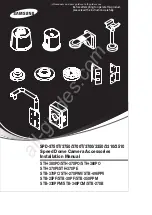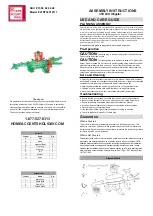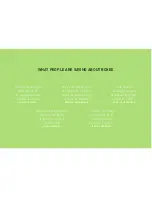
The following caution and warning should appear in manuals and/or instructions for users, especially at the point of use.
Handling Instructions for
Lithium Ion Rechargeable Cell
1. CHARGING ELECTRIC CAR, CHARGER AND BATTERY PACK DESIGN CONSIDERATIONS
1.1 CHARGING
1.1.1
Cell must be charged with constant current-constant voltage method. Charging voltage must below 4.20V/cell and the
charging cut-off current is greater than or equal to 1/20C. Even if the charge could be out of order, charge voltage of charger
should not be above 4.23V/cell to avoid over-charging. Cell life will be shorten by charging voltage above 4.20V.
1.1.2
Charger should be equipped with a pre-charging system, and the function should be used to prevent the abnormal large
multiplier charging after the deep discharge. In case of cell voltage is below 2.5V(and higher than 2.0V), cell should be charged with
pre-charge that current is below 0.5A (0.1C). Then cell voltage reach over 2.5V, standard charge starts. And if cell voltage never
reaches to 2.5V in 30 minutes, charger will stop charging. Don’t charge if the voltage is lower than 2.0V.
1.1.3
Charger should be equipped with a complete charging detection device including the timer inspection, current and open
circuit voltage to detect the current state of charge. When one of the detection such as timer, current and voltage detected
the full charge, charge should be completely cut off the charging circuit, avoid produce turbulence.
1.1.4
Charger should start charging at temperature range 0°C ~45°C (see spec 3.5).When the cell temperature exceeds 60°C, it
should be placed in the battery temperature to reach the above range before recharging.
1.1.5
For cycle life, use the normal charging or trickle charging method and minimize the fast charge.
1.2 DISCHARGING
1.2.1
Discharge end voltage must be over 2.5V.
1.2.2
Discharge temperature range should be -20°C ~ 55°C (see spec 3.8). If surface temperature exceeds 60 degrees, it should
be placed in the battery temperature to reach the above range before recharging.
1.3 STORAGE
Any storage, cell should be in low humidity (less than 70%RH), no corrosive gas atmosphere area. And there is no press and con-
densation on the cell. Best temperature range -20°C ~ 20°C.
For long storage, the soc of the cell must between 25% ~ 35% SOC, and the voltage of the cell must be checked before used.
1.4 PRECAUTIONS ON BATTERY PACK DESIGN
1.4.1 Battery pack Shape, Mechanism and Material
The battery pack should be designed to ensure that it can not be charged by an unauthorized charger. The battery pack should
be designed to ensure that it can not be connected to unauthorized equipment and equipment; both ends of the battery pack
should be designed to avoid short circuits or positive and negative The battery pack design should have anti-static function and
8
INR 21700 50 E
Handling Instructions
When stored within 1 month:
-20°C ~ 50°C
When stored within 3 months:
-20°C ~ 40°C
When stored within 12 months:
-20°C ~ 20°C
TerraE Confidential Proprietary and not be reproduced without written permission from BMZ Germany GmbH, Zeche Gustav 1, 63791 Karlstein































